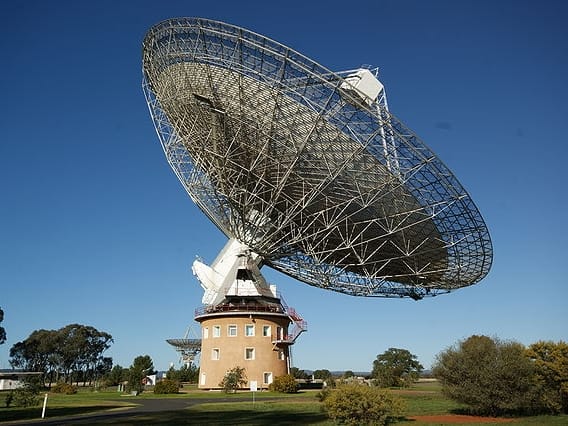
 Are we one step close to finding extraterrestrial life?
Are we one step close to finding extraterrestrial life?
Scientists with the world-famous Parkes Telescope in Australia have started conducting observations in search of intelligent life in the universe, with the first order of business being to check out nearby Proxima b, the recently discovered planet said to have the potential to be life-supporting.
An oldie but a goodie, the Parkes Telescope in New South Wales, Australia, is a 64-metre movable dish telescope, built way back in 1961 and run by the Commonwealth Scientific and Industrial Research Organisation (CSIRO). It served as one of three receivers of televised images of the Apollo 11 moon landing and as recently as 2012 was used to receive signals from NASA’s Curiosity landing mission to Mars.
Its new mission comes under the auspices of the Breakthrough Initiative, founded by Russian internet billionaire Yuri Milner and backed by among others physicist Stephen Hawking. Launched in July of 2015, the campaign includes Breakthrough Starshot, aimed at shooting ultra-light robot nano-crafts out towards distant worlds, Breakthrough Message, a $1 million (USD) competition to create the best message (and message format) to send out into the void, and Breakthrough Listen, a $100 million project to search the heavens for signs of life, called by the Initiative “by far the most comprehensive, intensive and sensitive search ever undertaken for artificial radio and optical signals.”
Parkes will be teaming up with other telescopes already on board the Breakthrough bandwagon, including the Green Bank Telescope in West Virginia, United States, the world’s largest fully steerable radio telescope and the Automated Planet Finder at Lick Observatory near San Jose, California.
“The Parkes Radio Telescope is a superb instrument, with a rich history,” said Pete Worden, Chairman of Breakthrough Prize Foundation and Executive Director of the Breakthrough Initiatives. “We’re very pleased to be collaborating with CSIRO to take Listen to the next level.”
At 4.2 light years away, the star Proxima Centauri is a close neighbour, all things being relative, which is why the recent discovery of Proxima b, a planet orbiting Centauri within the so-called habitable zone of potentially life-supporting planets, has drawn a heady amount of interest from the SETI (search for extra-terrestrial life) community.
Zeroing in on such habitable zone planets is job number one for both Breakthrough Listen and SETI research in general. “The chances of any particular planet hosting intelligent life-forms are probably minuscule,” said Andrew Siemion, director of UC Berkeley SETI Research Center. “But once we knew there was a planet right next door, we had to ask the question, and it was a fitting first observation for Parkes. To find a civilization just 4.2 light years away would change everything.”
“The Dish” at Parkes, as it’s called, will be scanning up to one million Nearby Stars during its tenure for Breakthrough, hitting about 5,000 over the next year, and will be able to cover the sky over the Southern Hemisphere which includes the centre of our Milky Way galaxy.
“The addition of Parkes is an important milestone,” said Yuri Milner, founder of the Breakthrough Initiatives, which include Breakthrough Listen. “These major instruments are the ears of planet Earth, and now they are listening for signs of other civilizations.”
Last month, the Breakthrough Initiative announced it had partnered with China to make use of its recently-completed FAST radio telescope, the largest single-dish telescope in the world.
Leave a Reply
You must be logged in to post a comment.



 Share
Share Tweet
Tweet Share
Share




Comment